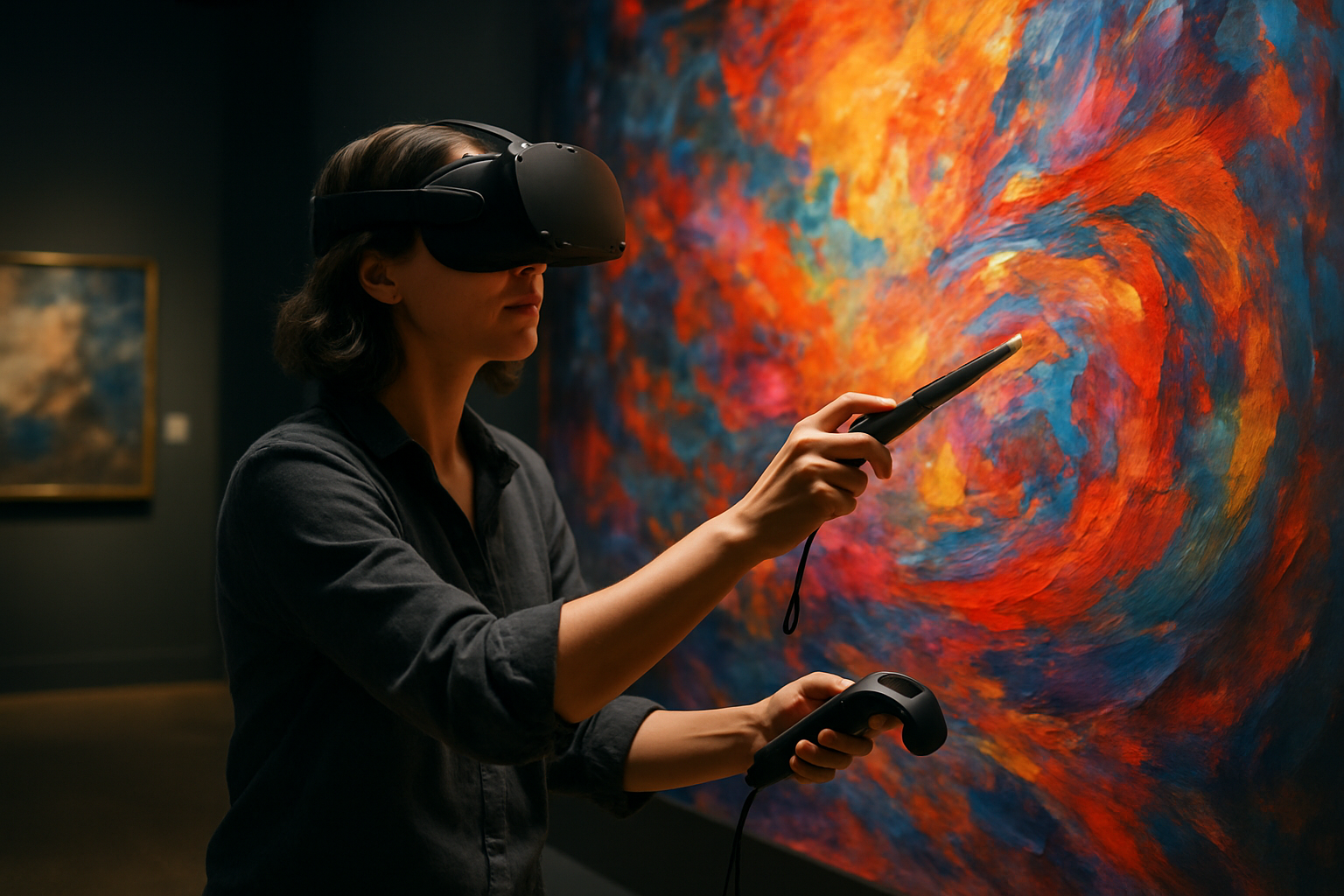Synesthesia in Contemporary Art: Blending Senses
In the vibrant landscape of contemporary art, a fascinating phenomenon is gaining prominence: synesthesia-inspired creations. This unique approach to artistic expression blurs the lines between sensory experiences, challenging traditional perceptions and opening new avenues for creativity. As artists increasingly explore the interconnectedness of our senses, they're producing works that not only captivate the eye but also engage the mind in unexpected ways, inviting viewers to experience art through multiple sensory channels simultaneously.

Historical Context: From Kandinsky to Contemporary Artists
The concept of synesthesia in art is not entirely new. Early 20th-century artists like Wassily Kandinsky, who claimed to hear colors and see sounds, incorporated synesthetic elements into their work. However, the current wave of synesthesia-inspired art takes this idea further, utilizing modern technology and interdisciplinary approaches to create immersive, multi-sensory experiences.
Technologies Enabling Synesthetic Art
Advancements in digital technology have played a crucial role in the rise of synesthesia-inspired art. Interactive installations, virtual reality, and AI-powered systems allow artists to create works that respond to multiple sensory inputs. For example, some installations translate sound into visual patterns in real-time, while others use scent diffusers to release specific aromas in response to visual stimuli.
The Role of Neuroscience in Artistic Creation
The growing collaboration between artists and neuroscientists has led to a deeper understanding of how our brains process sensory information. This cross-disciplinary approach has not only informed artistic practices but has also contributed to scientific research on perception and cognition. Some artists are even working directly with neuroscientists to create works that explore the intricacies of sensory perception.
Notable Synesthesia-Inspired Artworks and Exhibitions
Recent years have seen a surge in exhibitions and artworks centered around synesthetic experiences. The Museum of Modern Art in New York hosted a groundbreaking exhibition titled Soundscapes, which featured works that explored the intersection of visual art and music. Another notable example is the work of artist Neil Harbisson, who has an antenna implanted in his skull that allows him to hear colors, inspiring his unique approach to creating art.
Impact on Audience Engagement and Art Appreciation
Synesthesia-inspired art is changing the way audiences interact with and appreciate artwork. By engaging multiple senses simultaneously, these creations offer a more immersive and memorable experience. This multi-sensory approach has the potential to make art more accessible to diverse audiences, including those with sensory impairments.
Challenges and Controversies
While synesthesia-inspired art opens up exciting possibilities, it also presents challenges. Critics argue that some works may be more gimmick than substance, prioritizing sensory stimulation over artistic depth. There’s also the question of authenticity: can artists without synesthesia truly create synesthetic art, or is this appropriation of a neurological condition?
The Future of Synesthesia in Art
As technology continues to advance and our understanding of sensory perception deepens, the potential for synesthesia-inspired art seems boundless. We may see the development of new artistic mediums specifically designed to create multi-sensory experiences. Moreover, this trend could influence other fields, from advertising to education, as the power of multi-sensory engagement becomes more widely recognized.
A New Frontier in Artistic Expression
Synesthesia-inspired art represents a fascinating convergence of neuroscience, technology, and creativity. By challenging our traditional notions of sensory experience, these works invite us to perceive the world in new and exciting ways. As this movement continues to evolve, it promises to reshape our understanding of art and perception, offering fresh perspectives on the interconnectedness of our senses and the nature of human experience.





